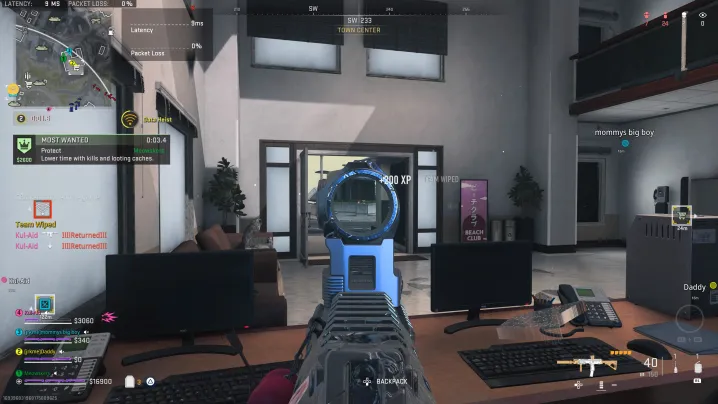Six months after its initial release, Call of Duty: Warzone 2.0 has evolved tremendously, with many new features added as part of major updates. Despite this, the game still feels slightly unfinished in ways, lacking some of the features that made the original so great. Warzone 2.0 is a complex beast that may steer newcomers away, but if players can learn to master it, the battle royale can be a lot of fun, especially with a team.
But with so much competition in the battle royale space, is Warzone 2.0 worth your time six months later? Here’s the current state of the popular shooter after a lot of retooling from Activision.
Slow trickle

Warzone 2.0 had a rough start when it launched in November 2022. In countless ways, the game was worse than its predecessor, with baffling omissions and odd design choices.
The general takeaway with Warzone 2.0 is that it has taken Activision an excruciatingly long time to address its problems. Sure, the game is mostly in a great spot right now, but Activision’s slow time to react soured the overall experience. Even a month after launch, the game felt like a major step backward from the original game, with a slew of issues persisting.
Players were unable to run while applying armor plates, there was a lack of Buy Stations and cash around the map, perks were broken, there were no one-hit kill snipers, and the overall pacing was sluggish. Nearly all of these issues have been fixed, which is great, but these are problems the game shouldn’t have had to begin with coming off of the original Warzone. I can’t help but feel the game should still be in a better spot six months later, despite offering lots of fun.
This is made even worse by the fact that the game is packed to the brim with in-your-face store bundles, which come off as gross and out of place considering how the sequel still isn’t entirely on par with its predecessor.
Room for growth

Despite the game’s evolution over the past several months, it still has a long way to go. For starters, the UI is hard to use, with unintuitive, ever-changing tiles scattered across the screen. These represent the game’s many modes, but are hard to parse, especially since the game gets updated with different playlists weekly. Even after six months, I still struggle to get into the match type I want to play.
Along with that, the gameplay still feels a bit slow compared to the original, particularly due to the fast time to kill (TTK). Basically, if an enemy starts firing at you first, you have almost no chance to react, causing most gunfights to be partially decided by luck. I’d personally love to see the TTK increased across the board, allowing for slightly slower, more methodical gunfights that leave plenty of wiggle room throughout.
Another major pain point is skill-based matchmaking (SBMM) in the game’s standard non-ranked modes. The SBMM is oddly inconsistent, with many matches feeling like they’re high-stakes tournaments for millions of dollars in prize money, while others are packed with players who seem like they’ve never held a controller (or mouse and keyboard) before in their lives. It would be nice for each match to offer a healthy mix of player skills, rather than swaying so far in one direction or the other.
In the right place

Even with the plethora of issues, Warzone 2.0 is better than ever leading into Season 4. Notably, the addition of Ranked truly changes the game, offering more consistent matchmaking and plenty of reasons to keep playing. One of the best aspects is how it pairs you up with similarly-skilled teammates, meaning you’re more likely to be the last squad standing.
Another strength is that the game’s weapons are — for the most part — balanced. There have been a few exceptions here and there throughout its lifecycle, but it’s nothing compared to the DMR 14 or the broken Mac-10 blueprint from the original game. Activision has been great about promptly fixing overpowered weapons in Warzone 2.0, giving players a healthy variety of options. There still are an overwhelming amount of weapons, attachments, and tunings that may steer newcomers away, but for those who invest time into learning the ropes, it’s a lot of fun.
I also adore the Resurgence map Ashika Island. This mode pits 50 players against one another, leading to much faster-paced matches that end in around 12 to 15 minutes (as opposed to 25 to 30-minute matches on Al Mazrah). This is an excellent change of pace that truly gets to the heart of what makes battle royale fun without taking as much time.
So, is it worth playing?

I can’t wholeheartedly recommend Warzone 2.0 to all shooter fans or even players who love battle royale games at this moment. It’s a much faster-paced experience than Fortnite, but it’s much less polished in its current state. While Activision has implemented great ideas thus far, Warzone 2.0 has a long way to go to reach its full potential. Players wanting constant meaningful updates should probably look elsewhere, as Activision tends to take a while to add new content. But for those looking for a complex, lightning-fast shooter that will test your skills, Warzone 2.0 might be worth trying.
Editors’ Recommendations








